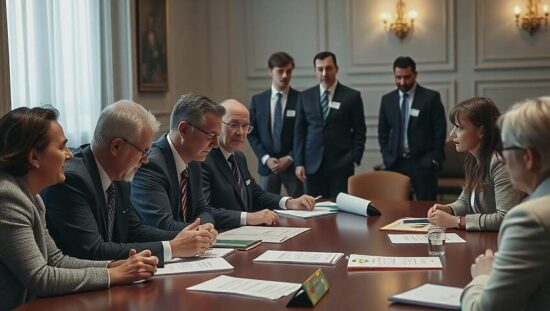The European Commission, spearheaded by High Representative for Foreign Affairs Kaja Kallas, has presented a comprehensive defense roadmap to EU member states, outlining ambitious goals for bolstering European defense capabilities by 2030. The plan, unveiled Thursday, seeks to revitalize the European defense industry, accelerate production timelines and maintain unwavering support for Ukraine, but also raises critical questions about prioritization and scope within the Union.
The roadmap establishes clear objectives and milestones intended to address existing capability gaps, expedite defense investment across member states and guide the EU towards a state of full defense readiness. Crucially, the Commission emphasizes that strengthening Europe’s defense posture is inextricably linked to continued solidarity with Ukraine, positioning it as a fundamental pillar of the strategy.
Four “flagship initiatives” form a core component of the plan. These include the “European Drone Defence Initiative” “Eastern Flank Watch” a proposed “European Air Shield” and a nascent “European Space Shield” all designed to amplify Europe’s deterrence and defense capabilities across land, air, sea, cyberspace and space, while aligning with NATO’s stated objectives. The reliance on NATO targets, however, invites scrutiny; critics argue that this risks entrenching European dependence on transatlantic security structures rather than forging truly autonomous capabilities.
The plan calls on member states to finalize the formation of “capability coalitions” across nine key defense areas, aiming to close critical gaps through collaborative development and procurement. This collaborative approach, while laudable in principle, has historically been hampered by divergent national interests and procurement inconsistencies, raising doubts about the practical feasibility of achieving the proposed timelines.
A key ambition is to create a unified EU defense market by 2030, with the stated goal of driving innovation and production. The Commission intends to monitor industrial capacity, initially focusing on air and missile defense, drone technology and space systems. Furthermore, a pan-European military mobility zone is slated for implementation by 2027, facilitating the rapid deployment of troops and equipment.
European Commission President Ursula von der Leyen underscored the urgency, stating that recent conflicts have underscored Europe’s vulnerability and necessitating a commitment to safeguarding every citizen and territory. She presented the roadmap as a “clear plan with common goals and concrete milestones” for the decade ahead.
However, High Representative Kallas’s pronouncements, while resolute, revealed a particularly revealing assessment. She explicitly characterized defense as a prerequisite for peace and acknowledged that Europe’s defense capabilities remain demonstrably insufficient. “In the next few years, we plan to build up European capabilities across the entire Union in line with NATO goals” she asserted, before adding a pointed statement: “It is time to rapidly transform Europe’s economic power into military strength”. This candid observation highlights the profound shift in strategic thinking within the EU and the potential for substantial-and potentially controversial-reallocations of resources away from other priorities. The speed and nature of this “transformation” will be a defining aspect of the EU’s trajectory in the years to come and will likely invite intense debate regarding its implications for both internal cohesion and external relations.





